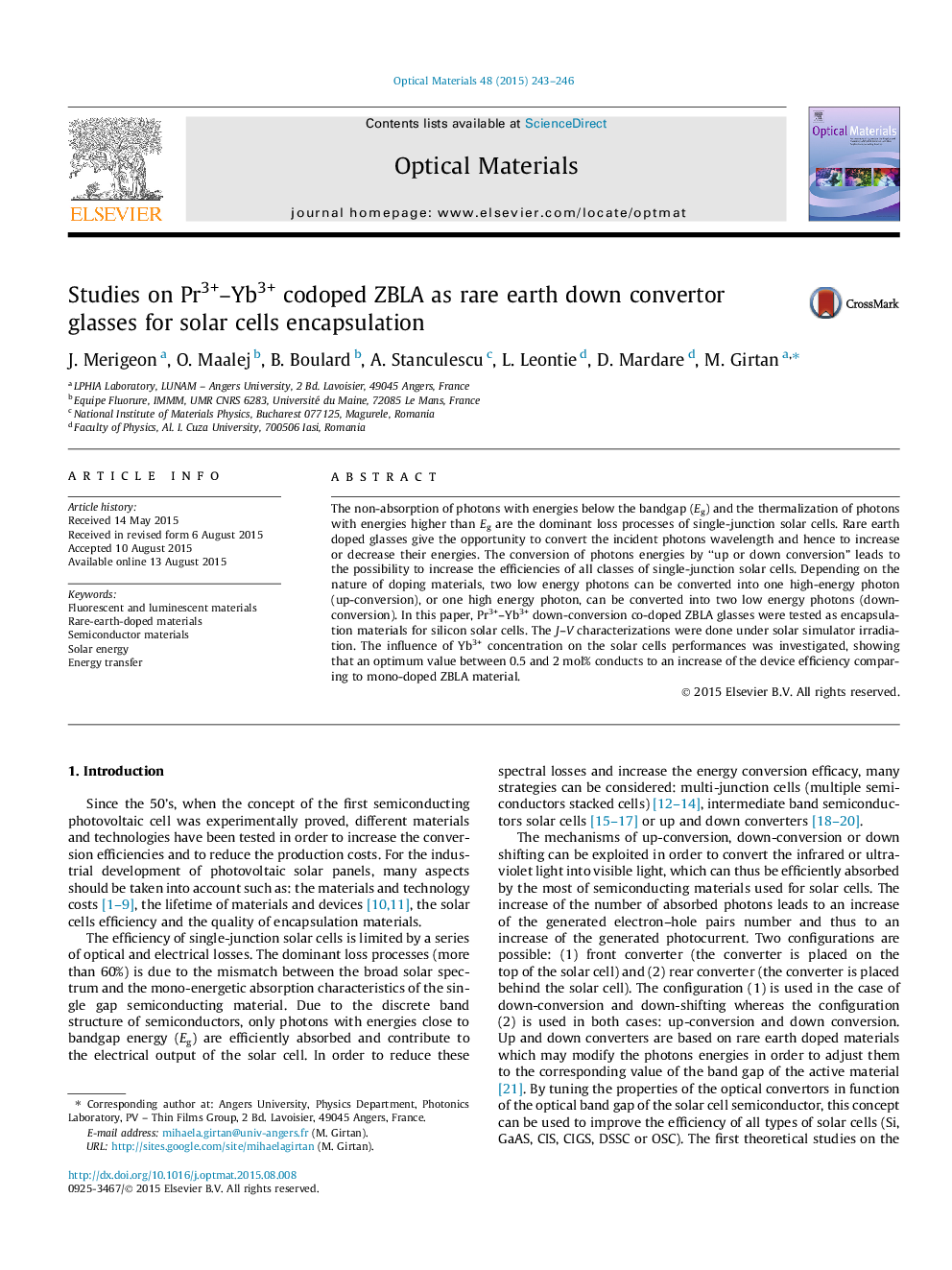| Article ID | Journal | Published Year | Pages | File Type |
|---|---|---|---|---|
| 1493801 | Optical Materials | 2015 | 4 Pages |
•We measure the performances of silicon solar cells using rare earth doped glasses.•The influence of Yb3+ doping level was studied for the Pr3+–Yb3+ co-doped ZBLA.•The optimum doping concentration is of 0.5–2 mol% Yb3+.
The non-absorption of photons with energies below the bandgap (Eg) and the thermalization of photons with energies higher than Eg are the dominant loss processes of single-junction solar cells. Rare earth doped glasses give the opportunity to convert the incident photons wavelength and hence to increase or decrease their energies. The conversion of photons energies by “up or down conversion” leads to the possibility to increase the efficiencies of all classes of single-junction solar cells. Depending on the nature of doping materials, two low energy photons can be converted into one high-energy photon (up-conversion), or one high energy photon, can be converted into two low energy photons (down-conversion). In this paper, Pr3+–Yb3+ down-conversion co-doped ZBLA glasses were tested as encapsulation materials for silicon solar cells. The J–V characterizations were done under solar simulator irradiation. The influence of Yb3+ concentration on the solar cells performances was investigated, showing that an optimum value between 0.5 and 2 mol% conducts to an increase of the device efficiency comparing to mono-doped ZBLA material.
Graphical abstractRare earth down convertors ZBLA doped glasses for solar cells encapsulation.Figure optionsDownload full-size imageDownload high-quality image (138 K)Download as PowerPoint slide
